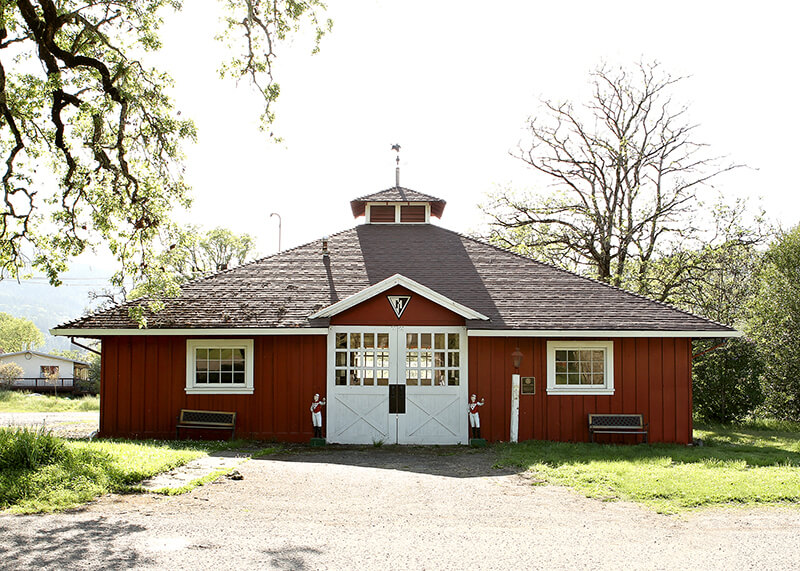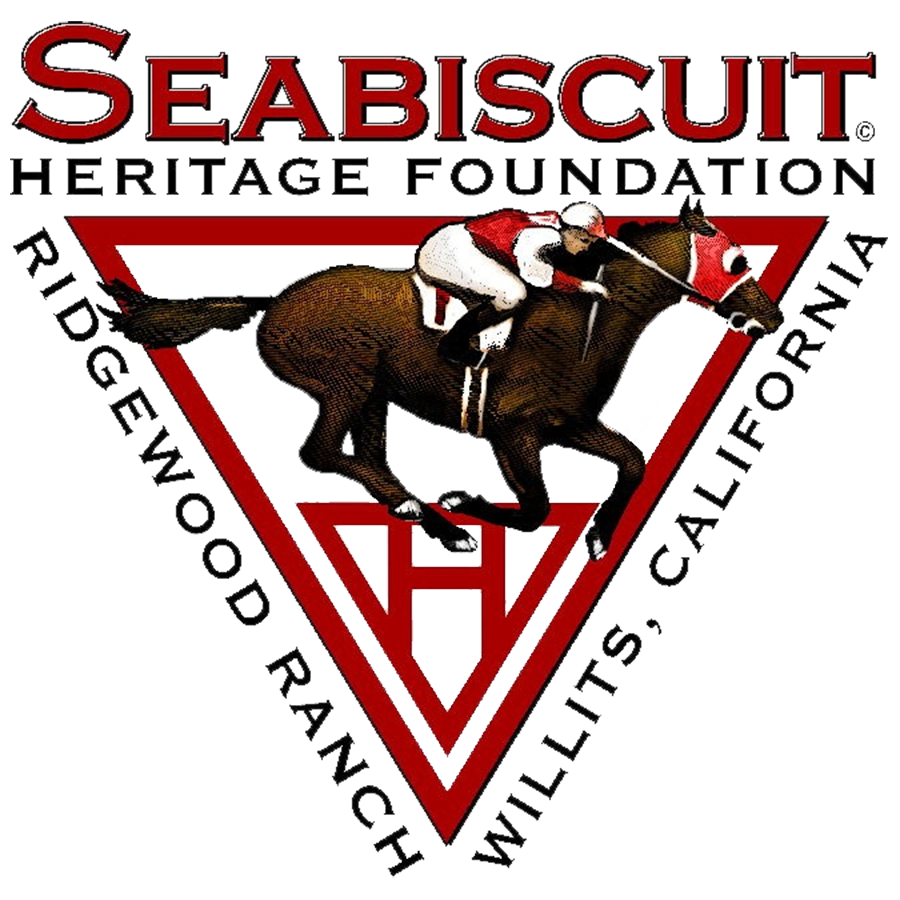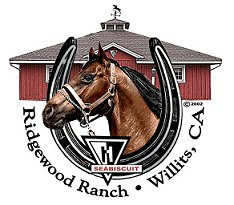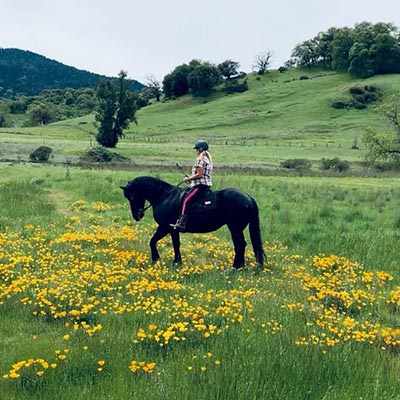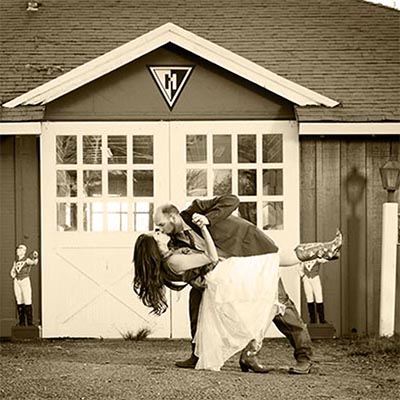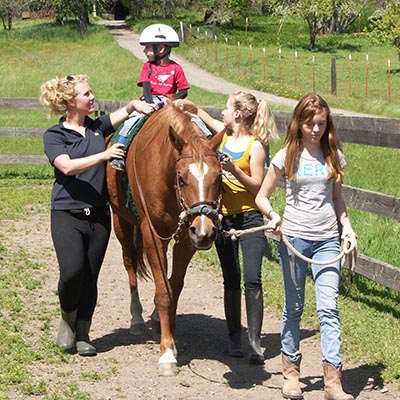Welcome to Ridgewood Ranch, where nature’s tranquility meets the rich tapestry of history. Nestled amidst the rolling hills and lush landscapes of northern California, Ridgewood Ranch stands as a testament to the enduring spirit of the land and those who have called it home. From its storied past as the beloved retreat of legendary racehorse Seabiscuit to its present-day allure as a sanctuary for conservation and recreation, Ridgewood Ranch invites you to embark on a journey through time and nature’s embrace. Discover the captivating tales woven into its terrain, explore its breathtaking vistas, and immerse yourself in the timeless beauty that defines this cherished sanctuary.
RIDGEWOOD RANCH
THE HISTORY OF RIDGEWOOD RANCH
The First Residents
The first residents of the valley, where Ridgewood Ranch is located, were the Northern Pomo peoples. It was an ideal environment with two creeks running year-round. There is evidence on the Ranch of native occupation, including pithouses. 1859 – Sheep Rancher, Rench Angle purchased and pieced the Ranch together over 25 years
The first white inhabitant of the valley was Captain Walker. He settled with his family in the 1850s and raised cattle. In 1859 Rench Angle settled in the valley and became the second owner, however, the first to hold title to what was to become Ridgewood Ranch.
Angle was a sheep rancher who, over the next 25 years, pieced together the Ranch, paying an average of $3.25 per acre. Tragedy struck the Angle family when Mr. Angle and 9 of his 15 children died. The children are buried with their father in a small cemetery on the Ranch.
1903 – William Van Arsdale, Rancher
The next owner of note, William Van Arsdale, purchased the property in 1903. Van Arsdale, a San Franciscan, used Ridgewood as a second home and began ranch operations growing alfalfa and grazing livestock. William Van Arsdale, whose name may be familiar to some through his construction of the dam on the South Eel River at Potter Valley, used his talent for moving water on the Ridgewood property as well.
In 1905 Van Arsdale developed the springs on the east end of the property, building a 340,000 gallon water tank. Then he piped the water down through a Pelton water wheel to generate electricity.
1919 – Charles S. Howard, Multimillionaire, Rancher & Owner of Seabiscuit
By the time Charles S. Howard came to own the ranch in 1919, he was a multimillionaire automobile magnate. He arrived in San Francisco some 16 years prior with just 21 cents in his pocket. Howard loved the Ranch. He was a “hands-on” owner who surveyed his spread atop a cow pony. Cattle, sheep, horses, vegetable garden, fruit orchards, and a dairy were all part of Howard’s thriving Ranch operation. The cattle round-ups were held annually and were magnificent events that involved Ranch employees, their families and friends, and many neighbors from nearby ranches. After the work was done everyone celebrated by enjoying the delicious barbecue.
Charles Howard was not without his challenges, however. In May of 1926, the Howard’s fifteen-year-old son, Frankie, was killed in a truck accident on the Ranch. Dr. Raymond “Doc” Babcock, a good friend of the family, encouraged Mr. Howard to honor his son by building a hospital in Willits. The modern, well-equipped Frank R. Howard Memorial Hospital opened its doors in 1928 with “Doc” Babcock at the helm. Additionally, Mr. Howard arranged that the Ranch would provide the food for the hospital.
1951 – The Welch Brothers – Loggers
Jeff & Elwood Welch bought Ridgewood Ranch from the Howard Estate in 1951. Outbidding Roy Rogers, they paid about $24 per acre, and became the Ranch’s 8th owners. The Welch Brothers ran cattle, but their primary interest was logging. During their 11 years of ownership, they logged at least 100 million board feet of wood, both old growth redwood and fir.
1962 – Christ’s Church of the Golden Rule – Restorers and Preservationists
Christ’s Church of the Golden Rule purchased the 16,000 +/- acre ranch from the Welch Brothers in 1962. Over the years, the Church has supported itself by various business ventures such as a dairy operation and print shop. Current operations include a mobile home park and running 200 head of cattle. The Church Association has actively pursued preservation of the old growth redwood forest that remain on the land. And, in the 1960’s began reseeding the logged area with Ponderosa Pine. The Church continues to be good stewards of the land. In 1996, they began stream restoration on both Forsythe and Walker Creeks, working in conjunction with the U.S. Dept. of Agriculture, the Natural Resources Conservation District and California Fish and Game. Today, 2,500 linear feet of creeks have been restored.
Currently, the Church is working with the Seabiscuit Heritage Foundation, the National Trust for Historic Preservation, Mendocino Land Trust and others to preserve the history of Ridgewood Ranch with particular emphasis on Seabiscuit, the legendary thoroughbred racehorse owned by Mr. and Mrs. Charles S. Howard in the 1930s and 1940s.
THE RIDGEWOOD RANCH COMMUNITY
Additional programs and businesses located at Ridgewood Ranch include:
IMAGES OF RIDGEWOOD RANCH
WHAT IS THE RIDGEWOOD RANCH CONSERVATION AREA?
Ridgewood Ranch is best known as home to America’s racehorse icon, Seabiscuit. Ridgewood Ranch is important for a number of reasons, both cultural and environmental. As home to America’s Depression-era icon, Seabiscuit, it holds national significance.
As a continuing working ranch, it holds value in a state and country whose farmlands are dwindling at an alarming rate. The Ranch’s importance as open space will continue to increase as surrounding land is subdivided and developed.
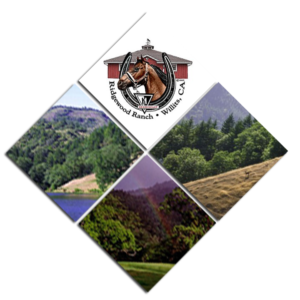
COMPLETED PROJECTS
Land Conservation The Mendocino Land Trust (www.mendocinolandtrust.org) purchased a 1,689-acre conservation easement from the Golden Rule Church Association on the historic Ridgewood Ranch in Willits, California on June 14, 2007. The conservation easement permanently conserves conifer forest, oak woodland and rangeland on Ridgewood Ranch along with 4.75 miles of fish-bearing streams, seven miles of tributary creeks, a “wet meadow” and a vernal pool. Funded by a grant from the California Wildlife Conservation Board, the $2 million purchase price for the Oak Woodlands conservation easement was substantially less than market value and represented a significant bargain sale from the landowner.
Ancient Redwoods
A small spectacular stand of old growth redwoods and mature second growth redwood forest are now permanently protected on the historic Ridgewood Ranch, near Willits, through collaboration with the landowner and the local Mendocino Land Trust.
Save the Redwoods League partnership protects ancient Redwoods 33 Acres at Ridgewood Ranch. Together with the Mendocino Land Trust, the League has protected some of the few remaining ancient redwoods in Mendocino County. www.savetheredwoods.org
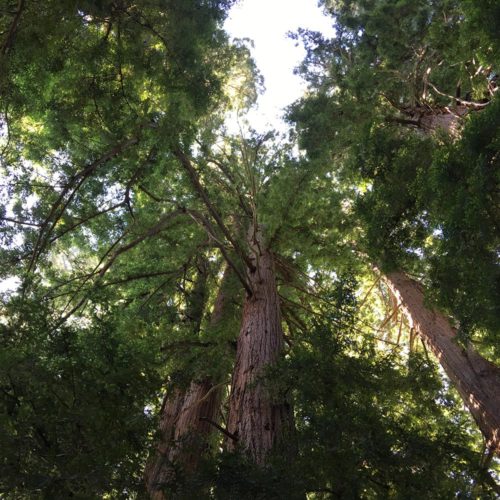
33 acres of old growth and second growth redwood, 1,689 acres of oak woodlands containing eight different oak species are in a permanent conservation easement.
Vernal pools (seasonal wetland ponds) of the rarest type found in California; unique and rare plant species
Seabiscuit’s stud barn was beautifully restored and added to the National Register of Historic Places in 2014. Seven buildings from the Howard and Seabiscuit era are included in historic walking tours. More than twenty buildings, including the Howard craftsman-style home, are eligible for historic status. Most are in an urgent state of rehabilitation.
Over 5 miles of Forsythe and Walker Creeks,16 miles of tributaries, and 570 acres of associated riparian areas. Extensive wildlife habitat for steelhead, golden eagle, great blue heron, bear, mountain lion, fox, deer, yellow-legged frogs, and numerous other species.
HISTORIC PRESERVATION
Seabiscuit’s Stud Barn listed in National Register of Historic Places – January 22, 2014. The stud barn is eligible under National Register Criterion A at the local level of significance in the area Entertaimnent/Recreation for its association with the champion racehorse Seabiscuit and his owner, Charles S. Howard. The period of significance begins when construction was completed in 1940 to the date of Seabiscuit’s death at age 14 in 1947. The property is owned by a religious organization but meets the requirements of Criteria Consideration A because the property is significant for its association with events that occurred prior to the property’ s acquisition by a religious organization. Seabiscuit’s Stud Barn is eligible under Criterion A in the area of Entertainment/Recreation as the retirement home of Seabiscuit, a racehorse of international reputation, and a site where racing fans came to visit the horse in his retirement years. While the races that won Seabiscuit his reputation had already occurred, the Stud Barn became a tourist attraction that drew thousands to this remote ranch in Mendocino County, thus gaining significance in its own right as a roadside attraction associated with one of the best-lmown horses in American horse racing history. The stud barn was also a component of a working horse ranch.
